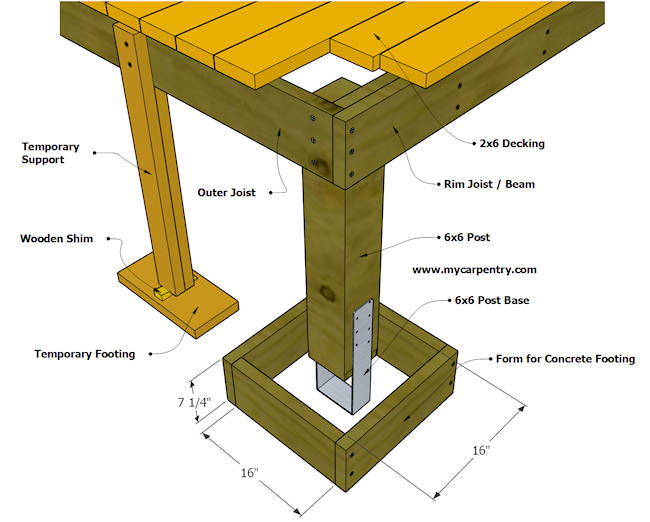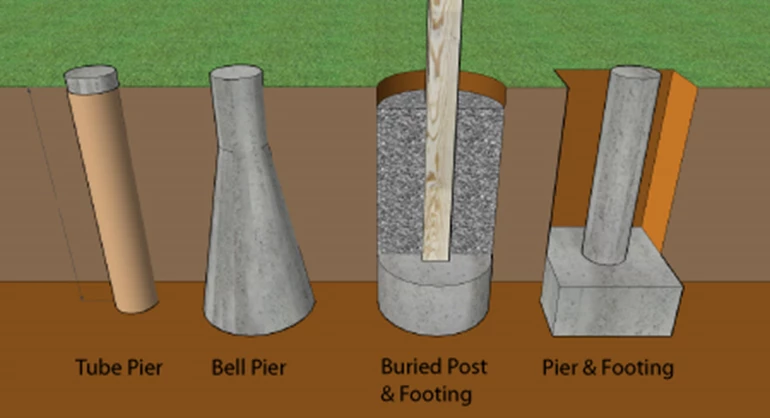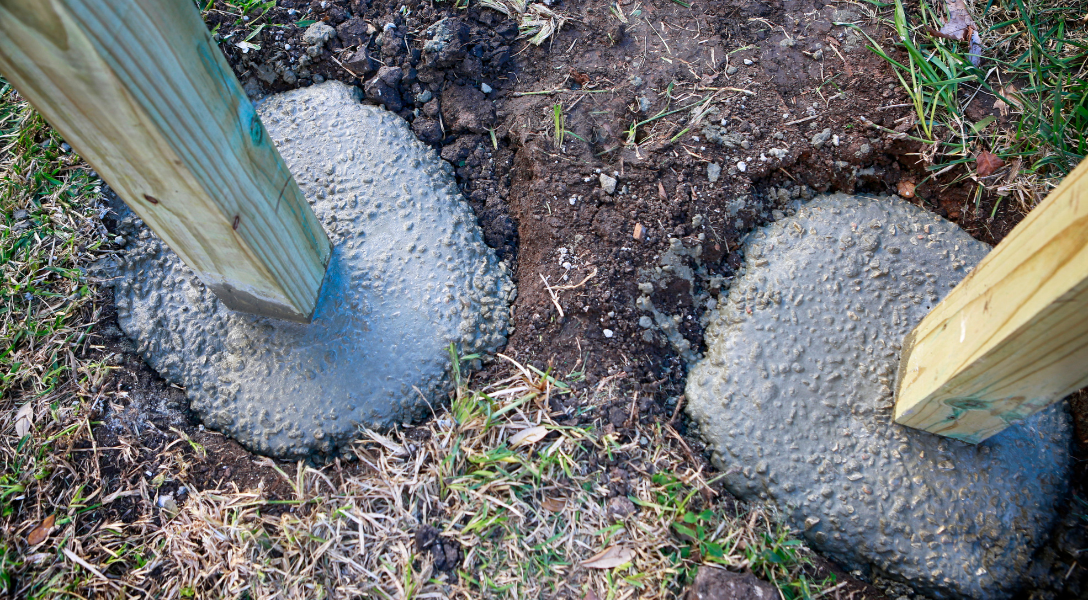Deck Footings 101: Browsing the Fundamentals for a Steady and Durable Deck
Ensure Security and Durability With Properly Set Up Deck Footings
Deck footings might not be the most glamorous aspect of deck building and construction, yet they play an essential function in ensuring stability and durability. In this conversation, we will check out the significance of appropriate deck grounds, variables to consider throughout installment, various types of grounds readily available, step-by-step installment overview, and upkeep pointers for ensuring lasting footings.

Value of Proper Deck Footings
Why are correctly set up deck footings critical for the security and longevity of your deck? Deck footings are the structure on which the deck rests, transferring the load from the deck to the ground.
Firstly, effectively set up deck grounds disperse the weight of the deck equally, preventing any irregular settling or sinking. This is especially essential in locations with unstable soil, as it helps to reduce the threat of the deck breaking down or changing. In addition, well-installed footings guarantee that the deck remains level, protecting against any kind of architectural damages that can occur when a deck becomes uneven.
Second of all, appropriately installed footings supply a solid support for the deck, avoiding extreme activity and persuade. This assists to preserve the structural integrity of the deck, reducing the threat of crashes or injuries. It additionally minimizes the deterioration on the deck, enabling it to stand up to the aspects and routine use for a longer time period.
Aspects to Think About for Deck Footing Installation
When setting up deck footings, there are several vital elements to take into consideration for proper installation. Different soil types have different load-bearing capacities, so it is essential to conduct a soil test to ensure the footings can support the weight of the deck and its passengers. By taking right into account these aspects, you can make certain the appropriate installment of deck grounds and delight in a lasting and steady deck.
Types of Deck Grounds to Pick From
There are a number of various sorts of deck footings available for you to select from. Each kind has its own benefits and drawbacks, so it's necessary to consider your details needs and the problems of your deck prior to making a choice.
One common sort of deck footing is the concrete footing. This entails digging holes in the ground and pouring concrete right into them to produce a solid structure. Concrete grounds are resilient and supply outstanding security, making them suitable for decks in areas with tough soil problems or high wind tons.
An additional choice is the helical pier ground, which includes a steel shaft with helical plates that are screwed into the ground. These footings fast to mount and can be utilized in different soil types, consisting of sandy or clay dirts. They are also adjustable, enabling easy leveling of the deck.
Sonotube grounds are one more popular option. These footings are developed by placing a cardboard tube in an opening and filling it with concrete. Sonotube footings are reasonably easy to mount and give adequate security for smaller sized decks or in areas with much less requiring dirt conditions.

When selecting the kind of deck footing, it's vital to think about elements such as read review soil problems, deck size and weight, local building ordinance, and personal preferences. By selecting the ideal footing type, you can make certain the security and durability of your deck.
Step-by-Step Guide for Putting Up Deck Footings

Establish the location: Begin by marking the specific position of each footing utilizing stakes and string (Deck Footings). Think about any local building regulations or regulations concerning obstacle ranges
Dig the openings: Use an article hole miner or an auger to dig the openings for the grounds. Typically, a depth of at the very least 36 inches is suggested for security.
Degree the openings: Make sure that the bottoms of the openings are level (Deck Footings). This can be accomplished by utilizing a degree or a straight board across the top of the holes
Add crushed rock: Area a layer of crushed rock at the base of each hole to boost water drainage and stop the ground from penetrating the dirt gradually.
Insert the footing forms: Put the footing develops right into the openings, guaranteeing they are centered and level. Use risks to use this link protect them in position.
Mix and pour concrete: Follow the instructions on the concrete mix bag to prepare the concrete. Pour the concrete right into the footing forms, filling them completely.
Smooth the surface area: Make use of a trowel to smooth the surface area of the concrete and remove any air pockets. Allow the concrete to treat according to the producer's guidelines.
Maintenance Tips for Resilient Deck Footings
Appropriate upkeep is critical for guaranteeing the long life and security of deck grounds. By frequently checking and maintaining your deck footings, you can avoid damage and potential safety hazards.
Routine cleansing is likewise crucial for maintaining deck footings. Dirt, plants, and particles can build up around the grounds, which can bring about moisture buildup and decay. Cleaning up the footings regularly, utilizing a brush or a stress washing machine, can help stop these concerns and extend the life expectancy of your deck.
In addition to cleansing, it is very important to keep the location around the footings clear of any type of obstructions. Prevent piling products versus the footings or enabling plants to expand as well near them. These blockages can trap dampness and create the grounds to wear away in time.
Last but not least, normal resealing of the grounds is suggested to safeguard them from wetness and various other ecological aspects. Using a water resistant sealant can assist protect against water damages and expand the life-span of the footings.
Verdict
Finally, proper setup of deck footings is essential for making certain stability and long life of your deck. Aspects such as dirt type, more helpful hints load capability, and regional building codes require to be thought about when selecting the appropriate sort of deck footings. Adhering to a step-by-step overview for setup and regular upkeep will assist to make certain the grounds stay long lasting and resilient.
In this conversation, we will certainly discover the importance of appropriate deck footings, variables to think about during installation, various types of footings available, detailed setup guide, and upkeep tips for guaranteeing lasting footings. Deck grounds are the foundation on which the deck relaxes, moving the load from the deck to the ground.One common type of deck ground is the concrete ground. Insert the footing forms: Place the footing creates into the openings, guaranteeing they are focused and level.In conclusion, correct installation of deck grounds is essential for making sure stability and durability of your deck.